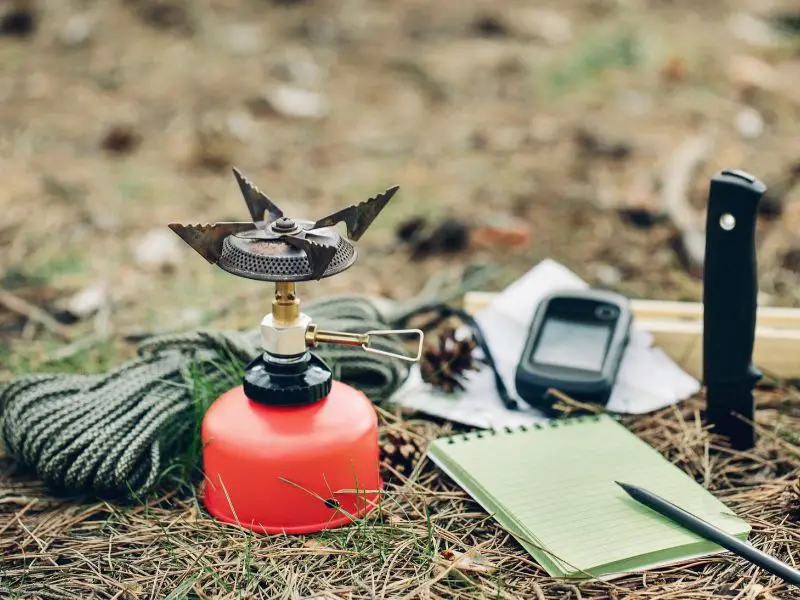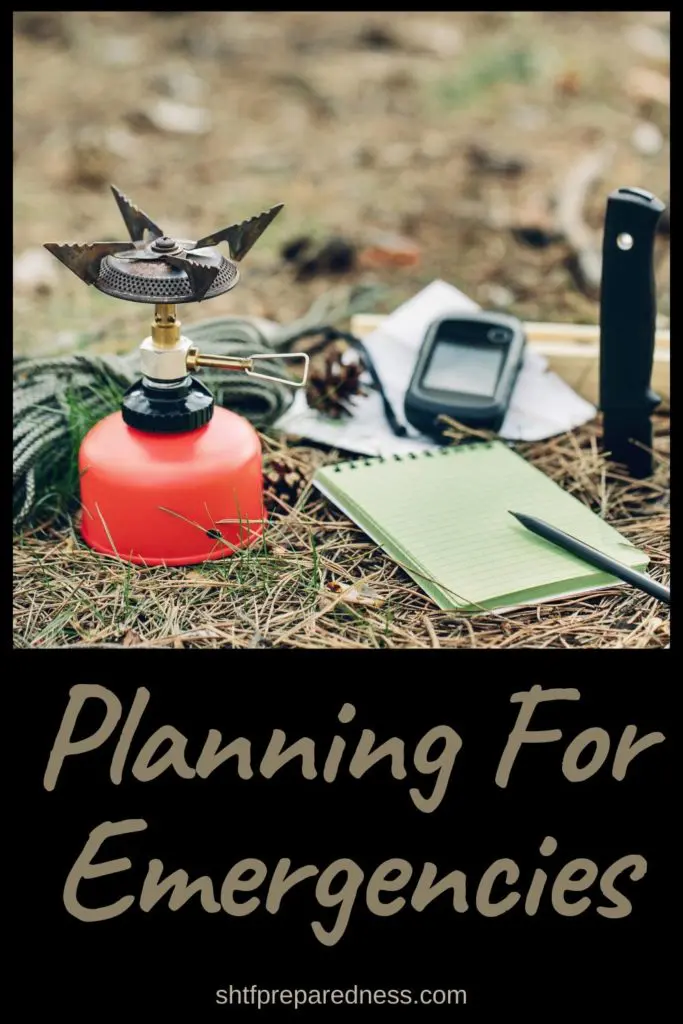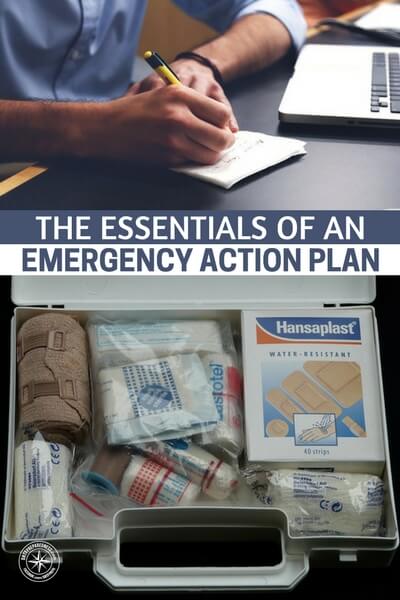When disaster strikes, you need a plan. In a true disaster scenario, panic can easily take over and cloud your thinking.
So, planning for emergencies is really important. Without a well-rehearsed action plan, you’re sunk.

An emergency action plan ensures you have the supplies you need and take the appropriate actions during an emergency.
If you have everything clearly written down and practiced, you’ll be able to go into autopilot in the event of an actual disaster.
You’ll know your way through everything, and you’ll have what you need to survive. Here’s an overview of what you should plan for and what you need if the unthinkable happens.
Tips For Planning For Emergencies
What Should You Plan For?
Emergency action plans don’t necessarily need to be specific to any single situation.
They can cover a variety of potential emergencies. However, depending on where you live, some scenarios are more likely to happen than others.
If you’re in Florida, you’ll want a plan that considers hurricanes. If you live in New York, though, you’re much more likely to encounter a blizzard. Californians should consider earthquakes and wildfires.
Here are some scenarios you might want to plan for:
- Earthquakes
- Floods
- Fires
- Blizzards
- Tornadoes
- Hurricanes
- Tsunamis
Also, keep in mind that extended power outages can accompany these disasters. A power outage is not necessarily an emergency itself, but you’ll want to consider how it will affect you while putting together your emergency plan.
What Should Be in Your Plan?
No matter what event you’re planning for, you should divide your action plan into three basic categories:
- People. Who will need to be physically accounted for? Who will need to be contacted? How will you contact them?
- Places. Will you remain at your location, or will there be a designated place everyone should meet at? How will you get there? When will you go? What if you can’t get there?
- Things. What supplies will you need to have with you? What supplies will you store at the designated safe place? How much food and water will you need?
Let’s look at each in detail.
1. People
Who do you need to account for?
- Your partner?
- Children?
- Parents?
Sit down with the members of your family and discuss what each person will do if the rest of you are not with them.
Write down phone numbers, email addresses, physical addresses, and any other contact information that might help you reach them. Check-in periodically and keep this list up-to-date.
Make sure you know where each person spends most of their time. That way, if you can’t get a hold of them, you’ll know where they are likely to be.
2. Places
Next, decide where everyone will meet to ride out the emergency. Some people will be home. Others may have off-site shelters.
Wherever it is, grab a map and choose at least two different routes you can take to get there.
That way, if one route is blocked, you have an alternative. Have everyone who will be driving practice the routes so they’re familiar with them.
3. Things
Portable Charger Battery Pack Flashlight with Belt Clip, Batteries Included
Flashlight with Belt Clip, Batteries Included ![Planning for Emergencies - Be Ready for a Disaster 5 GearLight M3 LED Tactical Flashlight [2 PACK] with Belt Clip, Batteries Included - Zoomable, 3 Modes, Water Resistant, Small Mini Light - Best Everyday Carry Flashlights](https://images-na.ssl-images-amazon.com/images/G/01/associates/remote-buy-box/buy5.gif) 2-in-1 First Aid Kit (348-Piece)
2-in-1 First Aid Kit (348-Piece) ![Planning for Emergencies - Be Ready for a Disaster 7 2-in-1 First Aid Kit (348-Piece) 'Double-Sided Hardcase' + BONUS 32-Piece Mini Kit: Perfect for Home & Workplace Safety [50 Person Kit]](https://images-na.ssl-images-amazon.com/images/G/01/associates/remote-buy-box/buy5.gif)
The CDC recommends stocking enough food and water to last a minimum of three days, so that’s a good starting point.
For water, it recommends one gallon per person per day. Just remember that even water and canned goods have expiration dates. You’ll want to periodically rotate your supplies.
Other than food and water, there are some basic items everyone should have as part of a home emergency kit.
- A portable battery pack or another way to charge your phone without electricity
- Flashlights and spare batteries
- Radio with hand crank: a National Oceanic and Atmospheric Administration (NOAA) weather radio is recommended
- Candles and either matches or lighters
- Can opener
- An emergency supply of medications
- First-aid supplies
- Toilet paper, toothpaste, soap, and other toiletries
- Basic tools like a utility knife and duct tape
- Cash: don’t assume there will be power for ATMs and card readers
Don’t rely too much on your smartphone; you’ll want the phone for communication and to receive news updates, and other functions can use a lot of battery power. And keep those battery packs topped off. You never know when you’ll need them!
Practice Your Plan
Disasters come in many forms, but they all bring chaos. Planning for emergencies will help alleviate some of that chaos.
Don’t assume that anyone in your family will be able to think logically about what to do in the event of a home emergency. You need to practice your plan until it’s second nature.
Gather everyone involved and have them practice pulling up contact information, calling others, and driving the chosen routes to your meeting places. Also, make sure everyone knows how to use the tools in your emergency kit. Practice, practice, practice.
Now, you have all the tools and safety tips you need to put together your own emergency action plan. Get started on your plan, practice, and stay safe out there.

AUTHOR BIO
 Sage is a safety expert for SafeWise. She enjoys teaching individuals, families, and communities about safe home and lifestyle habits. In her free time, she enjoys wedding planning, traveling, and learning French.
Sage is a safety expert for SafeWise. She enjoys teaching individuals, families, and communities about safe home and lifestyle habits. In her free time, she enjoys wedding planning, traveling, and learning French.

![Planning for Emergencies - Be Ready for a Disaster 4 GearLight M3 LED Tactical Flashlight [2 PACK] with Belt Clip, Batteries Included - Zoomable, 3 Modes, Water Resistant, Small Mini Light - Best Everyday Carry Flashlights](https://m.media-amazon.com/images/I/51nzNG6TsOL._SS200_.jpg)
![Planning for Emergencies - Be Ready for a Disaster 6 2-in-1 First Aid Kit (348-Piece) 'Double-Sided Hardcase' + BONUS 32-Piece Mini Kit: Perfect for Home & Workplace Safety [50 Person Kit]](https://m.media-amazon.com/images/I/51pDozniTaL._SS200_.jpg)
